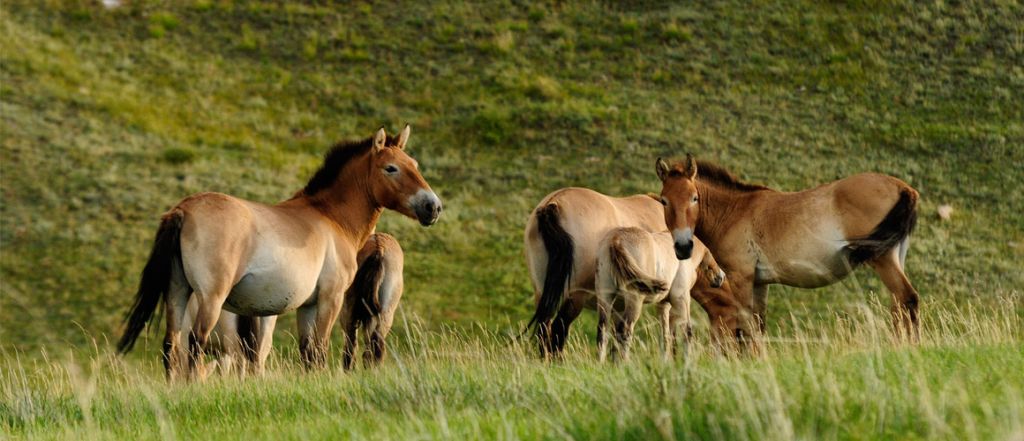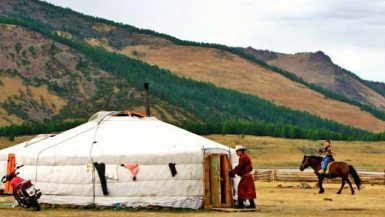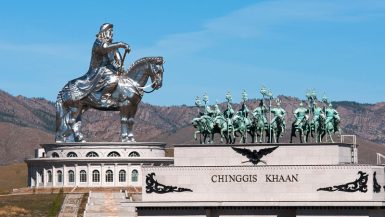Khustain Nuruu National park also known as Hustai NP has had remarkable success in re-introducing the Takhi wild horse and become one of the top travel destinations in Mongolia. The 50,000-hectare park, steppe and forest-steppe environment is also a great habitat of locally and globally endangered mammals and birds. There have been 459 species of plants, 85 species of lichens, 90 species of mosses, 33 species of mushrooms, and 55 species of mammals and 223 species of birds registered in the park.
Viewing the last true wild horses on earth
Just a hundred kilometers from the capital city with 1,6 million people, you can find the peaceful natural spectacle, the Hustai National Park which is the best known as a home to the Takhi or Przewalski’s horse, the last surviving wild horse in the world.
The story about this iconic Takhi horse
In 1900s, western researchers had believed that there were no true wild horse species left on earth, after the extinction of Tarpan horse in Europe. But in the Central Asia, especially on Mongolian territory, there were novel species of wild horse discovered which Russian explorer Nikolai Przewalksi first described about this wild horse and named after him in science as Przewalksi’ horse (Equus przewalskii). Mongolian name is Takhi.
Nikolai Przewalksi had crossed Mongolia three times in 1873, 1878 and 1880. On his way back from his second trip in 1878, he had heard an interesting story from Tikhonov. A , the commander of the Russian-Chinese border guards, that Kyrgyz hunters had given him a horse skin and skull as a gift from the Dzungarian Gobi Desert and that there were wild horses in Mongolia.
Since he was not a scientist himself; he was very interested in the subject and gave the skin and skull as a gift to Polyakov. I, a researcher at the St. Petersburg Museum of Natural History. Polyakov compared the 22 known breeds of horses at the time, and in 1881, Przewalski’s horse was registered in science as the name of the man who first introduced the horse’s skin and skull, noting that it was a completely new species.
Those who wanted to bring the last and only wild horse to their zoos come to the Mongolian Gobi. In 1897-1903 alone, foreign experts hired local people to catch 88 Przewalski’s horses from the Mongolian Gobi. But some of them could not arrive in Europe and only 54 foals survived during the operation of transferring from Mongolia to Europe.
And sadly, only 13 foals were bred in zoos. As a result, inbreeding in small Przewalski’s populations has increased, genetic diversity has decreased, and life expectancy has shortened.
In 1960s, there are almost no Takhi horses are left in the wild due to climate change and human activities.
So, in 1993, the Dutch Przewalski’s Foundation and the Mongolian Environmental Protection Association have launched a joint project to reintroduce the Takhi horse to the Khustai Mountains in Mongolia and that has been successfully implemented. Khustain Nuruu National Park becomes a great wild habitat of those iconic wild horses.
Today, about 2,000 Przewalski’s horses in are in the world. They are in reserves and protected areas in more than 30 countries which are descendants of those 13 Przewalski’s horses.





Leave a reply